The Importance of Multilingual Website Design in Today’s World
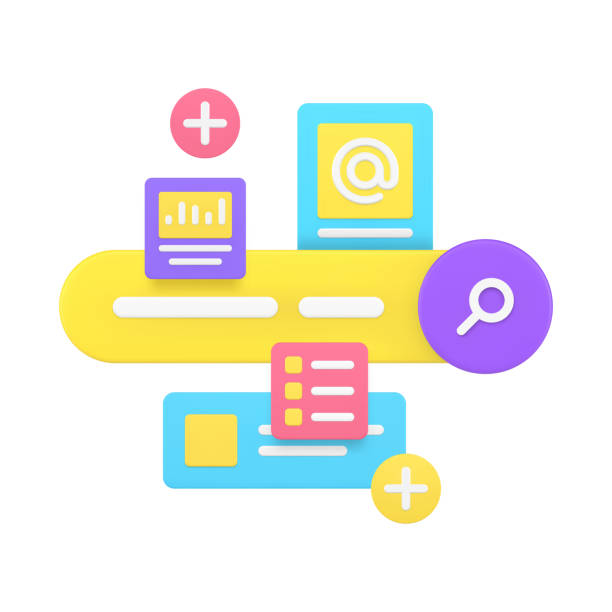
In the age of globalization, borderless communication and access to information worldwide, multilingual website design is no longer a luxury, but a necessity.
This approach allows businesses and organizations to reach a wider audience globally and penetrate new markets.
#GlobalAccess #InternationalMarket #CrossCulturalCommunication One of the primary goals in creating multilingual internet platforms is to increase content accessibility for users whose native language differs from the site’s primary language.
This not only enhances user experience but also showcases a business’s credibility and professionalism.
Beyond mere content translation, a successful multilingual website requires a deep understanding of cultural differences, regional preferences, and user search behavior in each language.
This is particularly crucial in the field of Search Engine Optimization (SEO) for different languages.
Without a comprehensive and planned approach, simply adding a few more languages to the site can lead to audience dispersion and confusion, rather than enhancement.
This article serves as a comprehensive and specialized guide, helping you become familiar with various aspects of multilingual website design and create a successful and effective platform for your global audience.
Don’t have a corporate website yet and missing out on online opportunities? With professional corporate website design by RasawWeb,
✅ Double your business’s credibility
✅ Attract new customers
⚡ Free consultation for your corporate website!
Competitive Advantages of a Multilingual Website
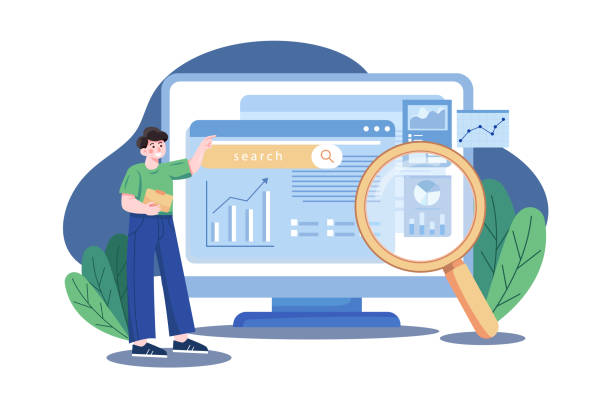
A multilingual website is a gateway to global markets, bringing significant competitive advantages for businesses.
#MarketExpansion #CompetitiveAdvantage #Branding Firstly, by providing content in multiple languages, businesses can reach a vast segment of the global population that is not proficient in English.
This expansion of audience directly leads to increased site traffic, improved conversion rates, and ultimately, sales growth.
Users are more inclined to make purchases from or interact with websites that offer content in their native language.
This is particularly crucial in specialized and complex fields where precise understanding of terminology is important.
Secondly, a multilingual website can serve as a powerful tool for international branding.
It shows that a business is customer-centric and cares about the needs of its global audience.
This attitude builds trust among users and creates a positive brand image.
Finally, in today’s competitive landscape, international business partners or investors may also be impressed by a multilingual platform that demonstrates a global vision and potential for scalability.
Therefore, investing in multilingual website design is not just an expense, but a strategic investment for the future of the business.
This smart move paves the way for deeper penetration into foreign markets and gaining a larger share of the global market.
Technical and Infrastructural Aspects in Multilingual Website Design

Implementing a successful multilingual website goes beyond mere text translation; it requires careful attention to technical and infrastructural aspects.
#URLStructure #Hreflang #WebHosting Choosing the right URL structure for each language is of paramount importance.
Three common approaches include using subdomains (e.g., en.example.com), subdirectories (e.g., example.com/en/), or country-code top-level domains (e.g., example.de).
Each has its own advantages and disadvantages in terms of SEO and management, and the choice must be made carefully.
One of the most important technical guidelines for multilingual SEO is the correct use of the hreflang tag.
This tag informs search engines that different versions of a page are available in various languages and prevents duplicate content issues.
Managing translations and ensuring the technical optimization of pages for each language is also essential.
Choosing a Content Management System (CMS) that fully supports multilingual capabilities can significantly simplify the process.
| Translation Method | Advantages | Disadvantages | Use Cases |
|---|---|---|---|
| Professional Human Translation | High accuracy, preservation of tone and original message, cultural localization | High cost, time-consuming | Sensitive content, legal, medical, marketing |
| Machine Translation (with Human Editing) | High speed, reduced initial cost | Requires precise editing, potential for localization errors | Voluminous content, news, blog (with review) |
| Pure Machine Translation | Instant and free, suitable for high volume | Low accuracy, lack of localization understanding, low quality | For internal content, or where high quality is not essential |
Furthermore, page load speed and overall User Experience (UX) should be optimized for each language.
Choosing web hosting servers that are close to your target audience in each geographical region can help reduce load times.
All these technical details must be carefully considered during the multilingual site implementation process to ensure optimal performance and success in attracting a global audience.
This is a specialized area that requires technical knowledge and precise planning.
Content Management and Translation Workflow

Managing multilingual content is one of the most challenging yet crucial aspects of multilingual website design.
#ContentManagement #TranslationWorkflow #MultilingualCMS Choosing a suitable Content Management System (CMS) that supports multilingual capabilities is the first and very important step.
Platforms like WordPress with plugins such as WPML or Polylang, or more powerful systems like Drupal and Joomla, are good options.
These systems allow you to manage content in an organized manner for each language, without causing conflicts or confusion.
After selecting a CMS, creating an efficient content translation workflow is essential.
This workflow should include steps for collecting new or updated content, submitting it for translation (or using in-house translators), reviewing and quality controlling, and finally publishing the content in different languages.
Coordination between the content creation team, translators, and site developers is crucial to ensure consistency and up-to-dateness of content across all languages.
Additionally, there should be a plan for continuously updating multilingual website content, as outdated content can harm the site’s credibility.
Furthermore, tools for managing and maintaining Translation Memory and Terminology Management should be used to ensure consistency across all translations and reduce long-term translation costs.
This is an educational and guiding approach to organizing the complex process of content management on a multilingual platform.
Did you know that a weak corporate website loses many opportunities daily? Solve this problem forever with professional corporate website design services by RasawWeb!
✅ Create a powerful and reliable image for your brand
✅ Attract targeted new customers and increase sales
⚡ [Get Free Website Design Consultation]
User Experience (UX) and Localization

Beyond mere word-for-word translation, successful multilingual website design requires a deep understanding of User Experience (UX) and cultural localization.
#UserExperience #Localization #LocalCulture Localization means adapting content and design to the culture, habits, and expectations of the audience in a specific geographical region.
This includes aspects such as currency, date and time formats, phone numbers, addresses, images, colors, and even tone and communication style.
What is accepted and effective in one culture may be meaningless or even offensive in another.
For example, colors have different meanings in different cultures, or certain images might be appropriate for one society and inappropriate for another.
It should be noted that translation is not merely word-for-word, but must convey the original message considering the cultural context.
User Interface (UI) design should also be such that selecting and changing languages is easy and intuitive for users.
A clear and accessible Language Switcher on every page allows users to quickly switch to their desired language.
Furthermore, it must be ensured that all site elements, including forms, error messages, and even notifications, are correctly translated and displayed in different languages.
Multilingual website design should create a sense of trust and personal connection with the user, showing them that their needs are understood.
This engaging yet guiding approach helps organizations establish more effective communication with their global audiences and provide an enjoyable user experience.
SEO Strategies for Multilingual Websites
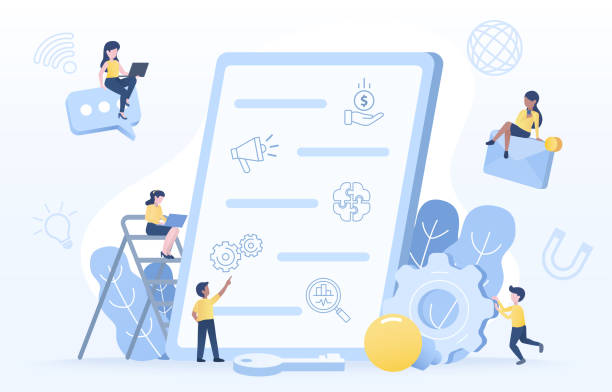
The success of a multilingual website design depends on a comprehensive and precise SEO strategy that goes beyond traditional SEO.
#MultilingualSEO #Keywords #LocalSEO In multilingual SEO, keyword research must be conducted separately for each language and geographical region.
Keywords that are effective in one language may not be applicable in another, or their direct translation might be meaningless.
Attention must be paid to cultural differences and how users search in each language.
Correct use of the hreflang tag, as mentioned earlier, is crucial to prevent duplicate content issues and direct users to the correct language version.
This tag helps search engines like Google understand which version of a page is targeted for which language and geographical region.
Furthermore, technical optimization such as site load speed, mobile compatibility, and logical information architecture is essential for all language versions.
Building local and international links can also help increase site authority and ranking in search engines.
Focusing on Local SEO for each linguistic region can also attract relevant and quality traffic, especially for businesses with a physical presence in different areas.
Monitoring SEO performance in each language separately using tools like Google Analytics and Google Search Console is also important for identifying optimization issues and opportunities.
This is an analytical and specialized approach to ensure high visibility of the multilingual website in search engines.
Advanced SEO Implementation and Data Analysis in Multilingual Sites
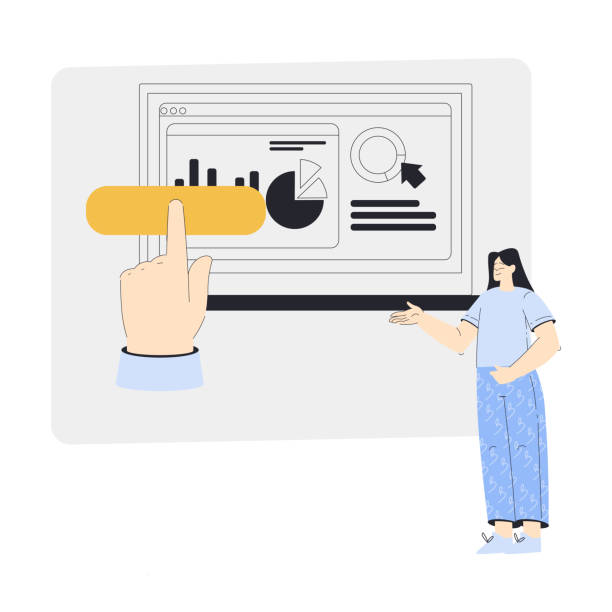
To achieve maximum potential from multilingual website design, advanced SEO implementation and precise data analysis are essential.
#AdvancedSEO #DataAnalysis #InternationalReporting Beyond the basics, it must be ensured that all language versions of the site are correctly included in XML sitemaps.
These sitemaps must be properly submitted to search engines to ensure the correct indexing of all pages.
Additionally, implementing Schema Markup or structured data for multilingual content can help search engines better understand the site’s content and display it more attractively in search results (e.g., Rich Snippets).
| Item | Description | Status |
|---|---|---|
| Hreflang Implementation | Correctness of hreflang tags for all language versions | Checked / Needs Review |
| URL Structure | Use of appropriate subdomains, subdirectories, or TLDs | Approved / Needs Change |
| Keyword Research | Separate keyword research for each language | Completed / In Progress |
| XML Sitemaps | Inclusion of all language URLs in sitemaps | Submitted / Needs Submission |
| Load Speed | Optimization of load speed for each language version | Optimized / Needs Optimization |
| Webmaster Tools | Configuration of webmaster tools for each language/country version | Configured / Needs Configuration |
Data analysis for a multilingual site requires precise configuration in tools such as Google Analytics.
Separate views should be created for each language to independently track site performance for each language group.
This includes examining traffic, bounce rate, conversion rates, and user paths in each language.
This analytical information helps you optimize your content and SEO strategies for each language.
Multilingual website optimization is an ongoing process, and by meticulously analyzing data, strengths and weaknesses can be identified, and data-driven decisions made for performance improvement.
This analytical and specialized approach enables organizations to maximize their investment in this area and lead in global markets.
Common Challenges and Solutions in Multilingual Website Design
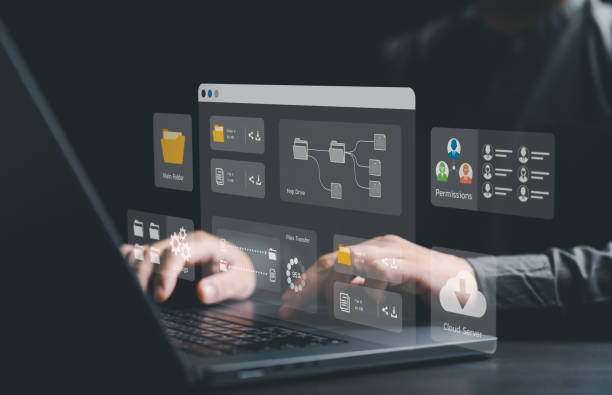
Despite numerous advantages, multilingual website design is not without its challenges.
#Challenges #Solutions #SiteMaintenance One of the biggest challenges is ensuring the quality and accuracy of translations.
Poor or machine translations can harm brand credibility and disrupt user experience.
The solution is to always use professional translators and experienced localizers who are proficient not only in the language but also in the target audience’s culture.
Another challenge is the continuous content management and updates across multiple languages.
This can be very time-consuming and complex.
Using a powerful CMS with multilingual capabilities and creating a transparent and automated translation workflow can reduce this burden.
International SEO issues are also challenging, especially managing hreflang tags and preventing duplicate content problems.
This requires continuous monitoring and technical knowledge in international SEO.
Additionally, site load times may decrease for users in more distant geographical regions.
Using Content Delivery Networks (CDNs) and local hosting servers can help solve this problem.
Other challenges may include coordination among different teams (development, content, marketing), each of whom must have a clear understanding of the goals and requirements of a multilingual website.
Establishing clear communication and using collaboration tools can help resolve these issues.
This section addresses intriguing and informative content to familiarize users with potential problems and practical solutions for multilingual website management.
Are your e-commerce site visitors leaving before purchasing? Worry no more! With RasawWeb’s professional e-commerce website design services, solve the problem of not converting visitors into customers forever!
✅ Significant increase in conversion rates and sales
✅ Exceptional and engaging user experience
⚡ Contact us now for a free consultation!
Successful Examples and Future Trends in Multilingual Website Design

Examining successful examples of multilingual website design can be inspiring and guiding.
Large companies like Airbnb and Spotify are excellent examples of multilingual platforms that, with a deep understanding of their global audience, provide a seamless and localized user experience.
These companies not only translate their content but also adapt their user interface and even their offerings according to cultural and regional preferences.
These informative and engaging examples demonstrate how investing in a multilingual platform can lead to significant global growth.
Regarding future trends, Artificial Intelligence (AI) and Machine Learning will play an increasing role in translation and localization.
Neural machine translation tools are making significant progress and can provide higher-quality translations at high speed.
These technologies can accelerate the initial translation process, but human editing and review are still needed to ensure accuracy and full localization.
Also, with the expansion of Virtual Reality (VR) and Augmented Reality (AR), multilingual platforms may move towards more interactive and richer experiences where users can interact more naturally with content in their own language.
These developments indicate that the future of multilingual website development will be dynamic and full of innovative opportunities.
Continuous Maintenance and Updates of a Multilingual Site
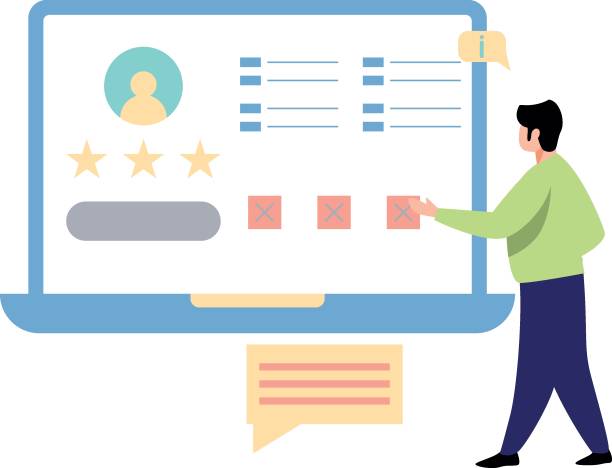
One-time multilingual website design is not enough; continuous maintenance and updating are essential to maintain its efficiency and effectiveness.
#Maintenance #Updates #OngoingPerformance Content must be regularly updated in all languages to provide accurate and relevant information to users.
This includes updating products, services, news, and blog articles.
Any changes to the site’s main content should be immediately conveyed to the translation team so that language versions are also updated.
Failure to do so can lead to incorrect or outdated information in some languages, which harms the site’s credibility.
Furthermore, monitoring the site’s technical performance, including load speed, broken links, and display issues in different browsers, should be carried out regularly.
These reviews should be conducted separately for each language version to ensure that the user experience is optimized across all languages.
Additionally, attention should be paid to changes in search engine algorithms and user preferences in each region, and the SEO strategy should be updated accordingly.
Regular analysis of traffic data and user behavior in each language can provide valuable insights for future improvements.
User feedback in different languages should also be collected and reviewed to identify and address potential issues.
Maintaining a multilingual website is an ongoing process that requires continuous commitment and resources, but its reward in terms of access to global markets and sustainable business growth is highly valuable.
This is an explanatory reminder and guide to the importance of continuous maintenance.
Frequently Asked Questions
| Question | Answer |
|---|---|
| What is multilingual website design? | It is the design of a website whose content is available to users in several different languages, allowing users to choose their preferred language. |
| Why is a multilingual site important? | To reach international audiences, increase website traffic, improve user experience for non-Persian speaking visitors, and expand business in global markets. |
| What are the advantages of having a multilingual site? | Increased international SEO, attracting new customers from different countries, enhancing business credibility and professionalism, and reducing bounce rate by providing understandable content. |
| What are the methods for implementing a multilingual site? | Using subdirectories (e.g., example.com/en/), subdomains (e.g., en.example.com), or separate top-level domains for each language (e.g., example.com and example.de). |
| Which URL structure is best for international SEO? | Subdirectories (like example.com/en/) are often preferred for SEO due to the consolidation of main domain authority, although each method has its advantages and disadvantages. |
| How does a multilingual site affect SEO? | By providing content in different languages, the site appears in local search results for those languages, click-through rates and traffic increase, and the overall domain authority of the site improves. Correct use of hreflang tags is very important. |
| How is content translation managed? | Professional translators, machine translation tools (with human editing), or Content Management Systems (CMS) with built-in multilingual capabilities or relevant plugins can be used. |
| What are the common challenges in multilingual site design? | Managing translated content, maintaining design consistency across different languages, compatibility with Right-to-Left (RTL) languages like Persian and Arabic, optimizing SEO for each language, and choosing the appropriate URL structure. |
| How do I manage text direction (LTR/RTL) on a multilingual site? | For Right-to-Left languages (like Persian), you need to apply specific CSS styles to change text direction, element layout, and table direction. Often by using the direction: rtl; property and other related settings. |
| How can users change the site language? | Typically by using a button, dropdown menu, or language selector widget clearly placed in the site’s header or footer. Automatic detection of the user’s browser language and suggesting a language change is also common. |
And other services of Rasaw Web Advertising Agency in the field of advertising:
Smart Marketing Automation: A novel service to enhance customer behavior analysis through attractive UI design.
Smart Social Media: A blend of creativity and technology for online growth by utilizing real data.
Smart Marketing Automation: Revolutionize SEO ranking improvement with the help of real data.
Smart Digital Advertising: An effective tool for campaign management by optimizing key pages.
Smart Sales Automation: A fast and efficient solution to increase click-through rates with a focus on marketing automation.
And over a hundred other services in the field of internet advertising, advertising consultation, and organizational solutions.
Internet Advertising | Advertising Strategy | Advertorial
Resources
Successful Strategies in Multilingual Website Design Global Business Expansion with a Multilingual Website Complete Guide to International Website Design How to Conquer Global Markets?
? Ready to shine and achieve sustainable growth in the digital world? RasawWeb Digital Marketing Agency, with its expertise in providing comprehensive services including SEO-optimized website design, Search Engine Optimization (SEO), and targeted advertising campaigns, is your reliable partner on the path to online success.
📍 Tehran, Mirdamad Street, Next to Central Bank, Southern Kazeroun Alley, Ramin Alley, No. 6



